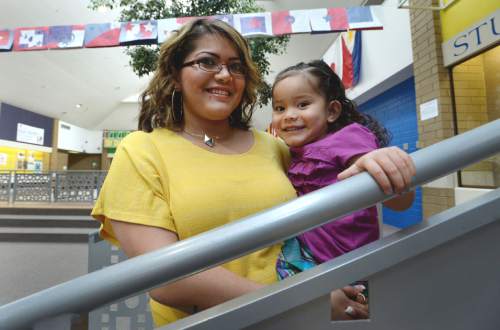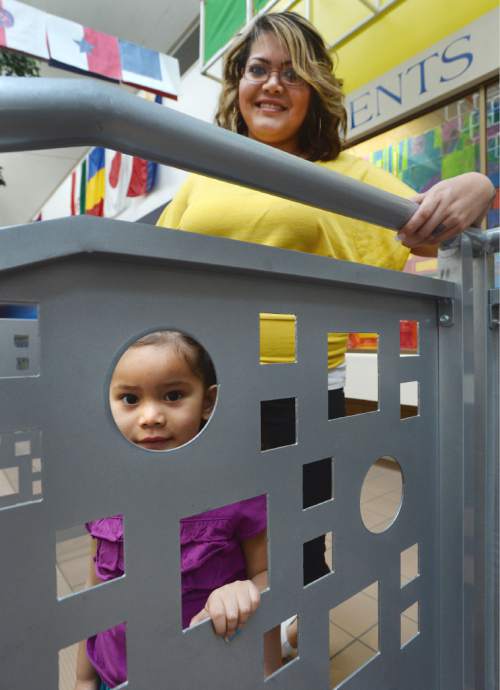This is an archived article that was published on sltrib.com in 2015, and information in the article may be outdated. It is provided only for personal research purposes and may not be reprinted.
Maricela Garcia was born into poverty. But the 26-year-old single mom wants to escape it so that her 3-year-old daughter, Eliahna, will have a better life.
Garcia and her daughter are part of an Ogden-based pilot program called Next Generation Kids that seeks to break the intergenerational-poverty cycle. Thirty families are participating in the program.
"We grew up very poor on assistance," said the Ogden native. "I don't want my daughter to see the struggles I went through."
The initiative to end the poverty cycle is the outcome of the Intergenerational Poverty Mitigation Act, passed in 2012. Its sponsor, former state Sen. Stuart Reid, said that by marshaling public and private resources to end poverty, taxpayers would save in reduced welfare and incarceration costs. And it's the humane thing to do, he added.
The program is spearheaded by the Utah Department of Workforce Services (DWS) and directed by the Intergenerational Welfare Reform Commission. The department on Tuesday afternoon released its five- and 10-year plan to address intergenerational poverty.
It focuses on four areas of child well-being: early development, education, family economic stability, and health. It also encompasses children's mental health and the challenges of childhood abuse and neglect.
"The data reveals that poverty is a symptom of a complex web of challenges and barriers," the report states, "including childhood abuse and neglect, poor academic outcomes and economic instability."
Nutrition is another key to breaking the cycle of poverty, according to the report. Undernourished children are not ready for kindergarten.
"Researchers are finding that child development begins in infancy," it states, "and the most critical years of brain development occur in the first three years of a child's life."
For Garcia, the pilot program is a godsend. She was staying at her mother's house, sleeping on the sofa. But a coach at Next Generation Kids showed her how to gain access to various resources, such as housing, day care, food and job training.
"I didn't know how I would go to school and work at the same time," she said. "I think it's an amazing program. They helped me find all the benefits."
Now Garcia is preparing to apply to the police academy. Her hope is to become a law-enforcement officer and provide a reliable income for her daughter.
"My daughter will get an education," Garcia said, "and be able to follow her dreams."
The pilot program also will help the commission understand what works and what doesn't work to break the poverty cycle, said DWS spokesman Nic Dunn.
The initiative tracks impoverished children at risk of remaining in poverty as adults to give a greater understanding of the phenomenon.
According to the report, 33 percent of children living in poverty are at risk of remaining in poverty until adulthood.
"Failure to intervene in the lives of children at risk of remaining in poverty," the report states, "risks imposing high societal costs on Utah, which may include incarceration, unemployment and drug and alcohol abuse."
According to DWS Executive Director Jon Pierpont, chairman of the commission, the report focuses on finding solutions across public and private systems.
"This plan is not a road map for government; rather it's a road map for everyone responsible for the healthy development of our children, including parents, teachers, policymakers and businesses."
The report, Pierpont said, establishes a framework and opens the door to innovation so that barriers can be removed, freeing future generations from poverty.





